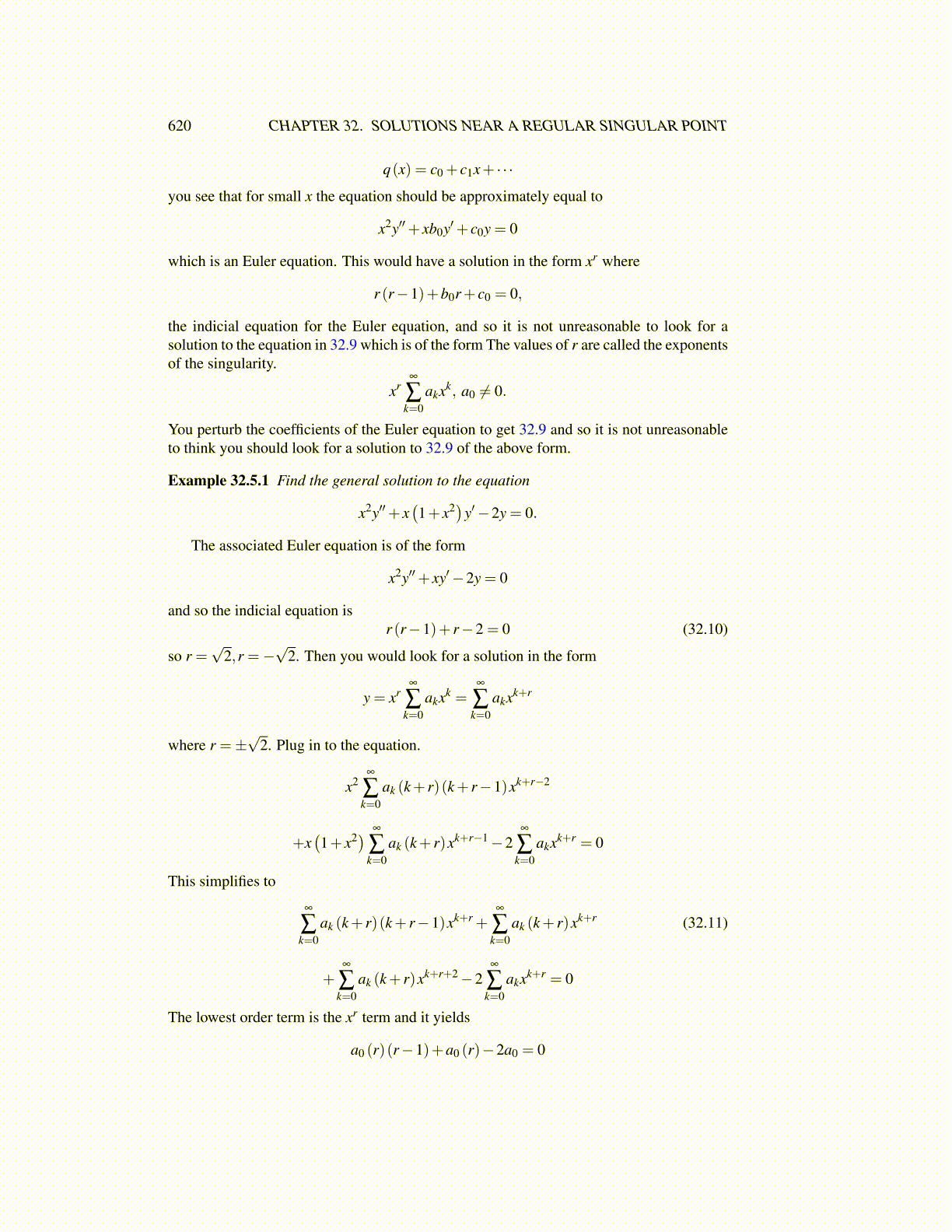
620 CHAPTER 32. SOLUTIONS NEAR A REGULAR SINGULAR POINT
q(x) = c0 + c1x+ · · ·
you see that for small x the equation should be approximately equal to
x2y′′+ xb0y′+ c0y = 0
which is an Euler equation. This would have a solution in the form xr where
r (r−1)+b0r+ c0 = 0,
the indicial equation for the Euler equation, and so it is not unreasonable to look for asolution to the equation in 32.9 which is of the form The values of r are called the exponentsof the singularity.
xr∞
∑k=0
akxk, a0 ̸= 0.
You perturb the coefficients of the Euler equation to get 32.9 and so it is not unreasonableto think you should look for a solution to 32.9 of the above form.
Example 32.5.1 Find the general solution to the equation
x2y′′+ x(1+ x2)y′−2y = 0.
The associated Euler equation is of the form
x2y′′+ xy′−2y = 0
and so the indicial equation isr (r−1)+ r−2 = 0 (32.10)
so r =√
2,r =−√
2. Then you would look for a solution in the form
y = xr∞
∑k=0
akxk =∞
∑k=0
akxk+r
where r =±√
2. Plug in to the equation.
x2∞
∑k=0
ak (k+ r)(k+ r−1)xk+r−2
+x(1+ x2) ∞
∑k=0
ak (k+ r)xk+r−1−2∞
∑k=0
akxk+r = 0
This simplifies to
∞
∑k=0
ak (k+ r)(k+ r−1)xk+r +∞
∑k=0
ak (k+ r)xk+r (32.11)
+∞
∑k=0
ak (k+ r)xk+r+2−2∞
∑k=0
akxk+r = 0
The lowest order term is the xr term and it yields
a0 (r)(r−1)+a0 (r)−2a0 = 0